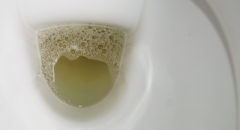
Aside from the Super Bowl, there are few things Americans are as passionate about as salt. Do you know Americans consumed as much as 53 million metric tons of salt in 2020 alone?
And yes, fast food vendors are aware of this Romeo-and-Juliet romance between Americans and salt; hence why they dutifully stack their products with salt.
Salt – when modestly consumed – is an essential part of your diet. As one of the body’s core electrolytes, salt (in sodium) plays a critical role in regulating body fluids and enhancing muscle and nerve function. Furthermore, your body needs sodium to manage blood volume and pressure appropriately.
However, salt quickly transits from hero to villain when it is immodestly consumed. This is particularly dangerous for people with kidney issues.
Let us start by examining the effects of excessive salt consumption.
How dangerous is excess salt?
Malfunctioning kidneys struggle with managing excess salt in your body. This can result in an unhealthy accumulation of fluid and sodium.
How does this manifest? Swollen ankles, blood pressure hikes, and unnatural puffiness in sections of your body are some of the signals of your kidneys struggling to manage salt.
It is the kidney’s full-time job to dispose of excess water from the body. It performs this by filtering your blood. For your kidney to successfully execute this, it needs
appropriate potassium-sodium equilibrium.
When your diet contains unhealthily elevated levels of sodium, this equilibrium is disrupted. Consequently, your kidney lacks sufficient traction to pull water from the bloodstream’s walls.
Ultimately, such a buildup of water and fluid can result in higher blood pressure. This commonly ends in kidney disease consequent to the substantial strain heaped on the kidney.
Aside from fluid intake, elevated levels of salt intake can result in increased urinary protein content. With more protein in your urine, the higher your kidney’s propensity to failure and cardiovascular disease.
What is the connection between salt and Kidney Stones?
According to The American Urological Association, of the 325 million people in the United States, 39 million will at one point in their life experience kidney stones.
READ: Kidney Stones: Who’s Most At Risk?
Wait, don’t mistake its prevalence for mildness. Kidney stones can be painful. More than the pains of urinating (especially as the stones pass through the patient’s urinary tract), kidney stones can cause nausea and even chronic kidney failure.
These stones are formed when specific chemical compounds coagulate in the urine, accumulating up into solid crumbs, like crystals. With the consequent buildup of these crystals, stones are formed.
Salt is the principal culprit behind kidney stones. This commonly results from the heightened loss of calcium in urine. The condition called Hypercalciuria triggers hikes in the calcium content of the bloodstream.
The bulk of kidney stones get produced when oxalate merges with the calcium – say, in your urine. Hypercalciuria prevalently leads to
kidney stones. This explains why 80 percent of kidney stones patients have been diagnosed with Hypercalciuria.
Studies have revealed that notable cuts in salt intake can dramatically reduce one’s propensity to kidney stones as well as slashing the amount of calcium excreted from the body via urine.
Is salt bad for kidneys?
Let us not vilify salt too much, shall we? Your body still needs salt. For optimal performance, your body requires a daily intake of 186mg of sodium.
How much salt should you take then?
According to the Institute of Medicine (IOM), if you are healthy (and an adult), you can consume as much as 1.5grams of sodium daily.
For the upper margin, the US Department of Health and Human Services – in agreement with the USDA (United States Department of Agriculture) and IOM – recommend that you shouldn’t consume more than 2.3g of sodium daily.
For context, this is a teaspoon of salt. Take note that it is hazardous for hypertensive people to take more than 7g of sodium daily.
So how do you slash your salt intake?
As always, when shopping for your groceries, be keen on the food labels. It suits you more to go with brands with relatively lower sodium content.
Bear in mind that most acclaimed specialty low-sodium foods produced with salt alternatives end up being loaded with potassium. This is as wasteful as robbing Peter to pay Paula because a high potassium intake is equally dangerous.
Now, if you fancy substituting salt in your meals, there are a handful of healthy spices and herbs to go with. Cinnamon, mint, rosemary, and basil count among this healthy bunch.
When you go out to get cooked meals, respectfully request for your fish and meat to be prepared without (or very minimal amounts of) salt. Lastly, frozen foods – just like processed and canned foods – are usually heaped with salt.









